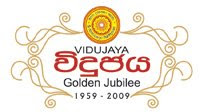How many plastic bottles do you throw away per week? Soda, soft drinks and even water now come in plastic bottles. Nowadays, people tend to use more plastic bottles than glass bottles, because they are lighter and easier to use and can be thrown away afterwards.

Bottles are sorted by hand.
|
Even though using plastics has its plus points, there are major negative effects on the environment; plastics contribute to environmental pollution on a major scale. This may sound hard to believe, but around 1.5 million tons of plastic is used every year in the world just to bottle water.
Let us tell you about plastics in detail. The word ‘plastics’ is used to describe a wide variety of resins or polymers with different characteristics.
Do you know what polymers are? Polymers are a long chain of molecules, a group of many units, taking its name from the Greek word ‘poly’ (meaning many) and ‘meros’ (meaning parts or units).
There are two types of plastics; thermoplastics and thermoset plastics. Thermoplastic polymers can be heated and formed repeatedly. The shape of this polymer molecule is linear (in a line) and slightly branched.
This may give you the idea that the molecules can flow under pressure when heated above their melting point.
On the other hand, thermoset polymers undergo a chemical change when they are heated, creating a three-dimensional network. After they are heated and formed once, these molecules cannot be reheated and reformed.
Plastic from a ‘blow-mould’ (the neck of the bottle is narrower than the body) has a slightly different structure from the plastic used in an ‘injection mould’ (where the opening is the widest part of the product). Out of the two types of plastics, thermoplastics are easier to recycle.
Now that we have given an introduction about plastics, let’s consider the recycling process; this differs according to the type of plastic we use. The next problem is, how do we identify the type?
Before answering that question, if you have a plastic bottle closeby, turn it upside down and see whether there is a number placed inside a chasing arrow sign. Do you know what this number means?
Obviously, it’s not just another useless mark on the bottle. This is known as the plastic identification or recycling code. This code system was created by the Society for the plastic industry in the 1980s. Let us tell you what each number means.
* No. 1 - Polyethylene Terephthalate (PET)

Bottles are sorted according to colour.
|
These plastics are used to produce soda and water containers, some water-proof packaging and tennis balls.
* No. 2 - High-density Polyethylene (PE)
These plastics are used to make milk, detergent and oil bottles, toys and plastic bags.
* No. 3 - Vinyl/Polyvinyl Chloride (PVC)
Food wrap and water pipes are manufactured from these plastics.
* No. 4 - Low-density Polyethylene
Many plastic bags, shrink wrap and garment bags are made using these plastics.
* No. 5 - Polypropene
Refrigerated containers, bottle tops and chairs are manufactured from these plastics.
* No. 6 - Polystyrene
These plastics are used for meat packaging, throwaway packaging and protective packaging.
* No. 7 - Other usually layered or mixed plastics
There is no recycling potential for these plastics. They must be discarded.
Out of these types, only PET and PE can be recycled. Though plastic recycling is not done on a major scale in Sri Lanka, we have a few small scale PET recycling plants here.

The bottles being crushed into small pieces in a machine.
|
Recently, we visited one such PET bottle recycling plant at Boralesgamuwa.
“We do not follow a complex recycling process here. We turn these bottles into another ingredient and export it to China,” said the owner of the recycling plant, Anura Jasenthuliyana.
According to Jasenthuliyana, they get around 20-30 tons of bottles per month through scavengers who collect these bottles from garbage dumps in the Colombo City. When the bottles reach the recycling plant, they are sorted out.
“We get only PET bottles, so, we don’t have to worry about the type of plastic. We just sort the bottles according to their colours”, said Jasenthuliyana.
“The darker the bottle, the lower its selling price. When reusing these bottles, manufacturers can use any colour for the clear bottles, whereas for the shaded bottles, there’s not much of an option; they can either use the same colour or go for black,” he explained. After the bottles are sorted out, they will be put into a machine and crushed to small pieces.
We are exporting these pieces to China, where they will be melted and used to make polyester fabrics”, he said. Fabric made using these bottles is strong, warm and durable.
The only problem with this fabric is that it doesn’t have a glossy finish, instead it come with a matt finish.
Five PET bottles yield enough fibre for one extra large t-shirt, while 25 two-litre bottles can produce a sweater.
PET is also spun like cotton candy to make fibre filling for pillows and quilts. It can also be rolled into clear sheets or ribbon to produce VCR and audio cassettes. Most products which are manufactured from recycled material can’t be recycled for the second time.
“I operate this recycling plant as a social service, to help keep the city clean. I request the public to help us in this course. What they can do is, sort out the plastics in their households and hand them over to a plastic collection centre,” said Jasenthuliyana.

